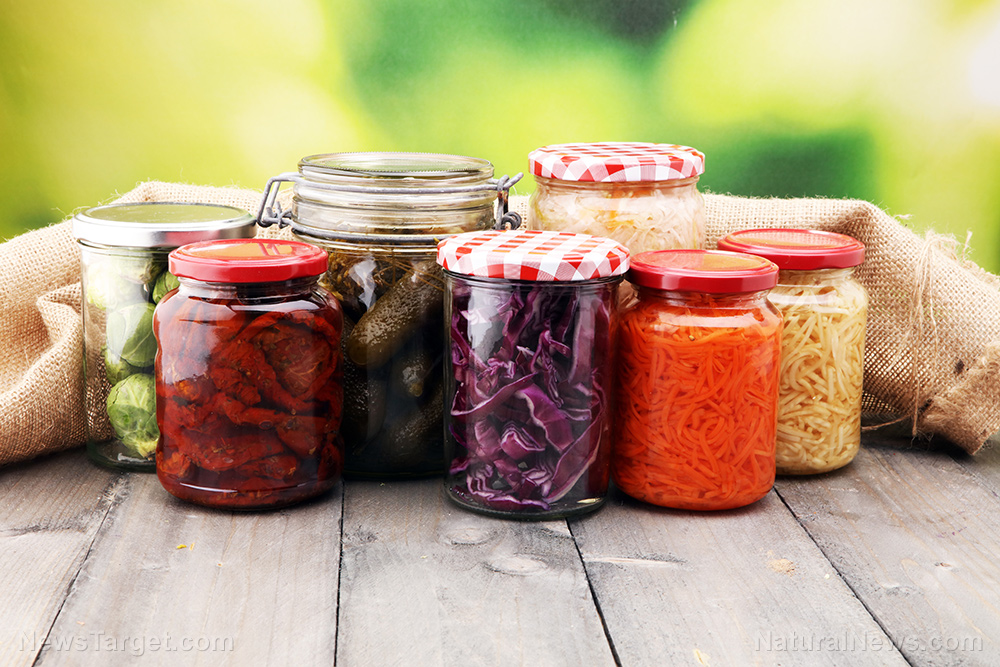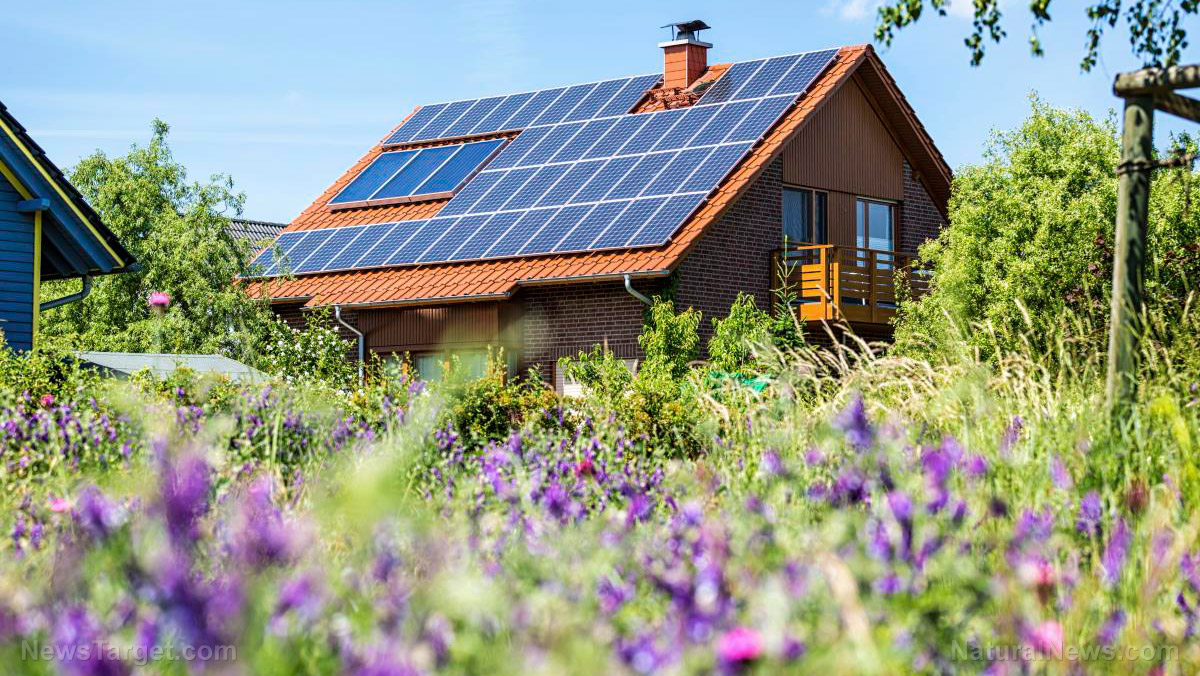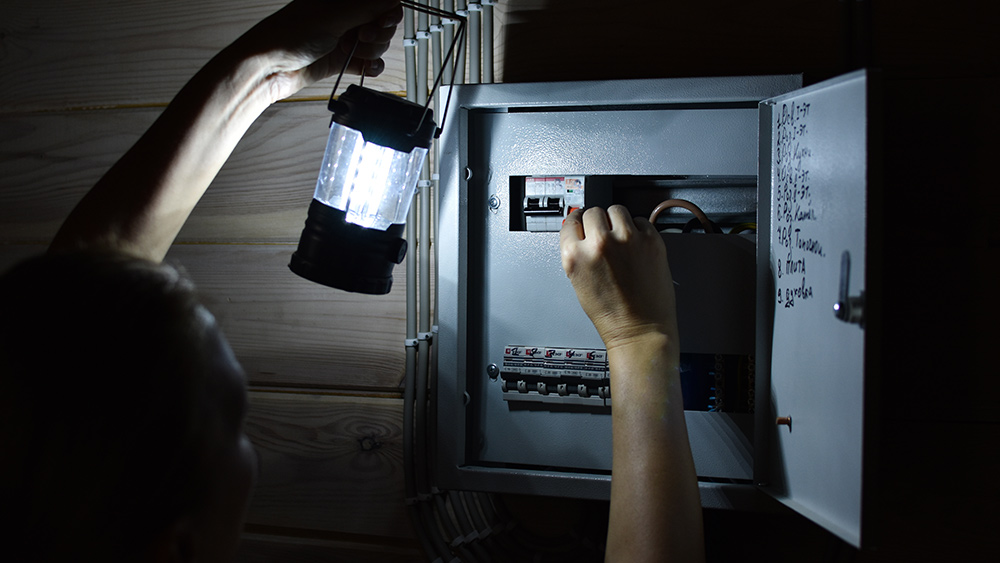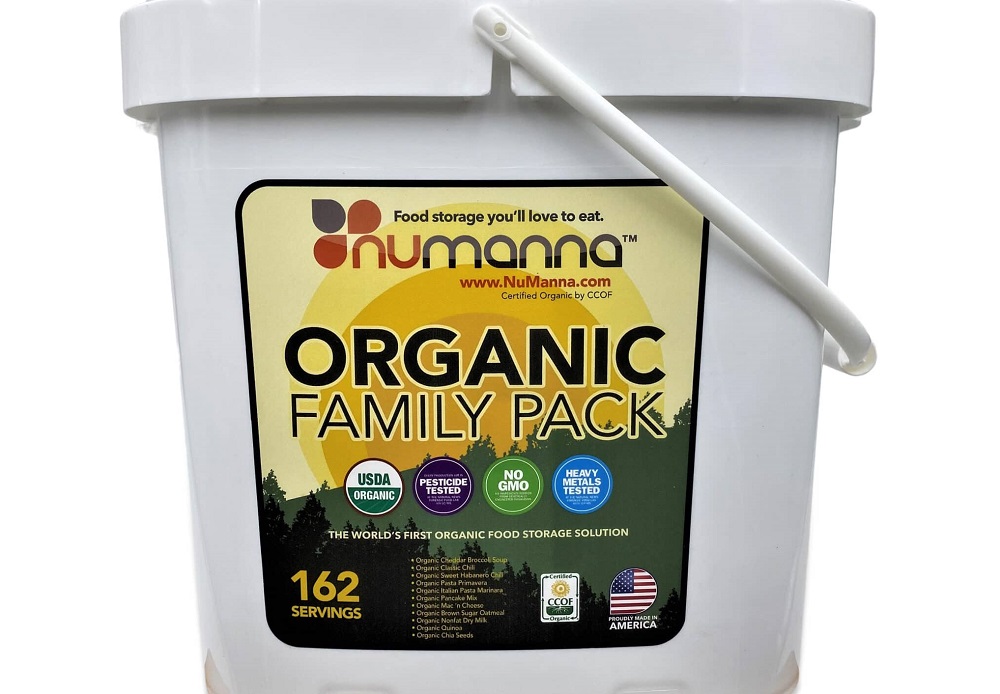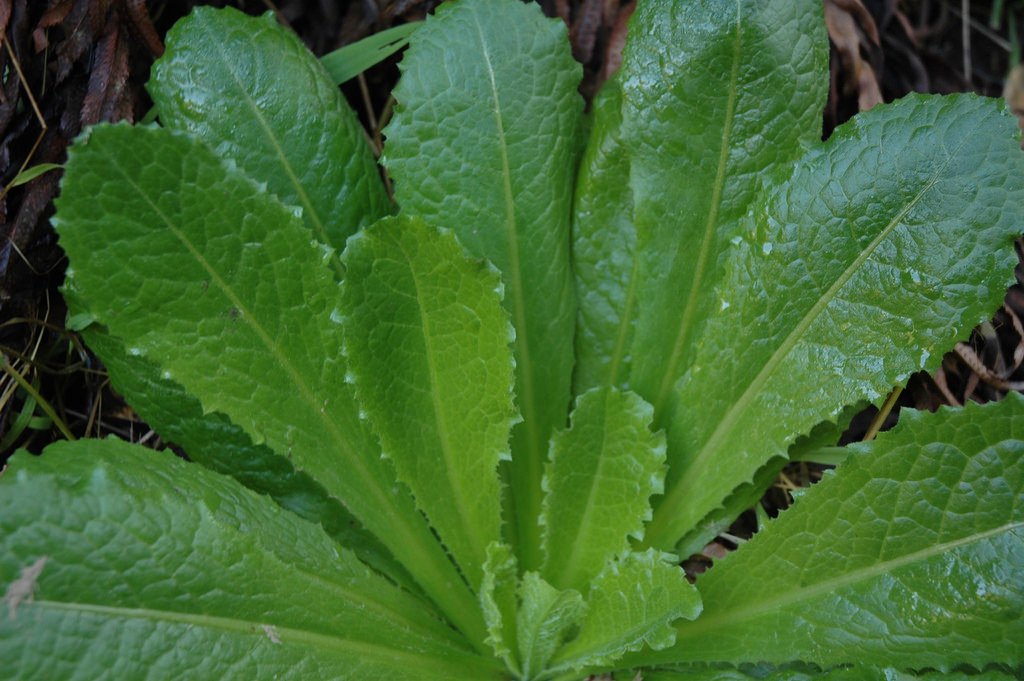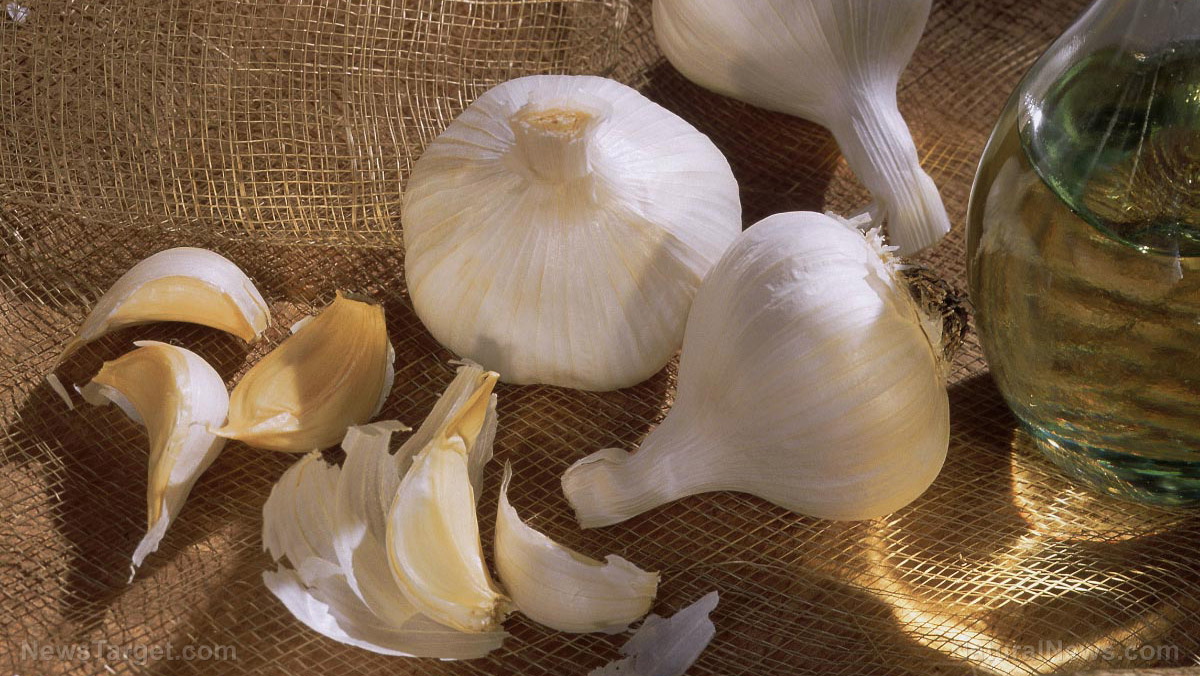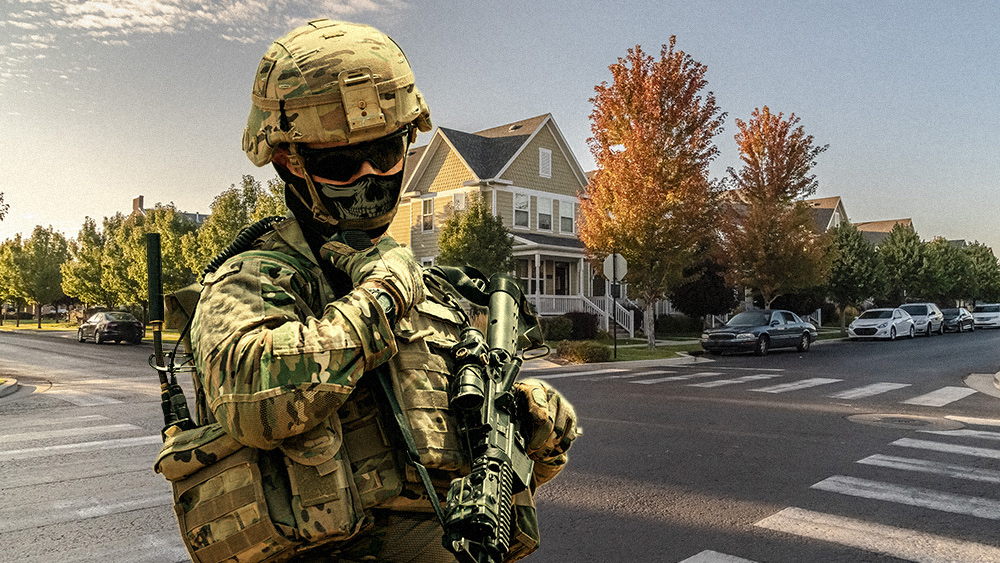Food prep and storage tips for your emergency food supply
11/11/2022 / By Zoey Sky
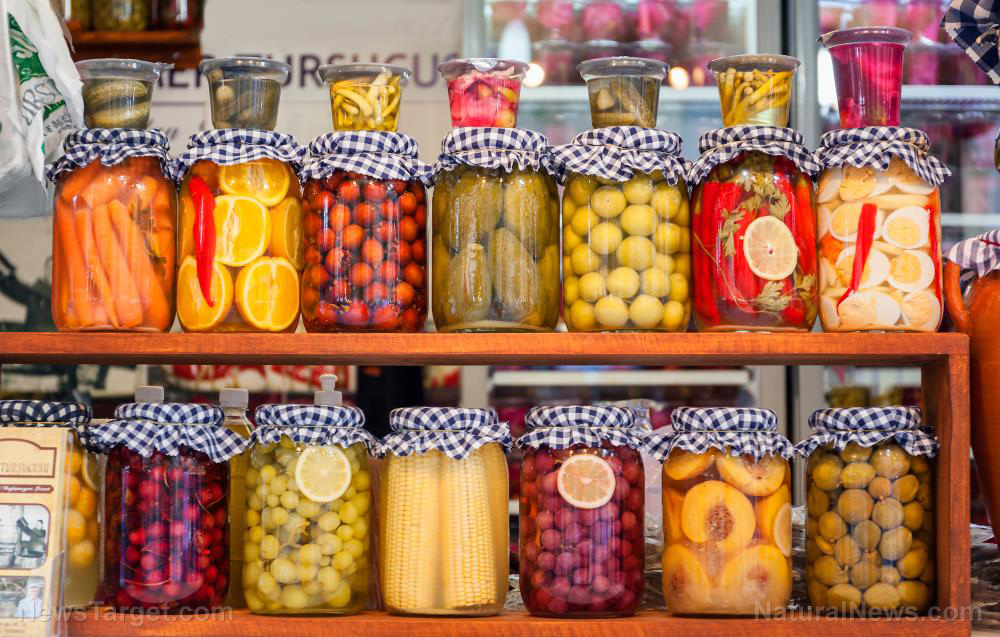
Proper food prep and storage are crucial for your survival stockpile. These two prepping essentials can help ensure that you and your family have access to enough food and clean water if you have to bug in at home during a long-term survival scenario.
If you want to extend the shelf life of items in your survival stockpile, follow proper food prep techniques and use the right kind of food storage containers. (h/t to FoodStorageMoms.com)
Basic tips for building your survival food supply
If you live in an area prone to major natural disasters, it’s wise to stock up on food before SHTF and your food supply is disrupted.
If money is tight, try to always have at least a three-day supply of food for your family since it may take several days before your local grocery store can restock. If possible, you can stock up on enough food for at least a week or a month to cover all your bases.
Here are some suggestions on what to stock up on before disaster strikes:
Foods with a long shelf life
Freeze-dried foods can be pricey, but if you have the budget for them they are great for your stockpile since they have a longer shelf life compared to dehydrated foods.
Here are some of the other benefits of freeze-dried foods:
- Freeze-dried food retains the original characteristics of the product, like color, taste, texture and nutrients.
- It reconstitutes to its original state when placed in water.
- Freeze-dried food remains shelf stable at room temperature so you don’t need to refrigerate it.
- The weight of freeze-dried products is reduced by 70 to 90 percent, with no change in volume.
- Freeze-dried food offers the highest quality in a dry product compared to other food drying methods.
Foods that don’t require cooking, water or refrigeration
When SHTF and utilities like water are disrupted, having foods that don’t require cooking, water or refrigeration means you can eat foods without any preparation.
Foods that contain very little salt
Salty food can make you thirsty, which can be a problem if you don’t have a lot of water in your stockpile or if the water supply in your area is limited because of a disaster.
Foods that meet your family’s dietary needs
Having a variety of items that meet each of your family member’s dietary needs is crucial if you have a baby or if there are elderly family members living with you.
Before SHTF, plan ahead and think of different recipes that will use up all the items in your food supply so nothing goes to waste.
When buying food for your stockpile, consider what your family likes to eat and buy those items for storage. Stock up on canned goods like beans, fruits, veggies, meat, tuna and other items.
You should also stock up on healthy foods like grains, nuts and healthy snacks. And while following a balanced diet is important, when SHTF both children and adults will still enjoy occasional treats like candy, chocolate and other snacks that can help boost morale when things are hard.
Foods and other supplies that meet the needs of your pets
If you have one or several pets at home like dogs or cats, make sure you also stock up on foods and supplies that they will need like pet food, some treats and water for drinking.
How to store emergency food properly
When storing food for your survival stockpile, you have several options. You can save time by buying dehydrated emergency foods stored in big buckets from some big box stores and online.
Alternatively, you can prepare and store your own food. This can help you save some money if you know how to do it properly.
Here are some things to remember when storing food in your survival stockpile:
Store items in the proper storage conditions
Ideally, you should keep your food supply in a room that is dark, cool and dry, like a basement or root cellar. The ideal temperature would be between 40 F and 70 F.
If you don’t have a room like this, make the best of the space that is available to you.
Check the expiration dates on canned goods and dry packages
Do a routine inspection and record the expiration date of items like dry packages and canned foods. Rotate the items in your stockpile before they expire and always replenish the things you consume so you don’t run out of anything when SHTF.
If there is homegrown food stored in your stockpile, they often have to be used up after a year.
Protect your food supply from insects and rodents
Don’t leave food in its original paper cartons and boxes, especially if you have an insect or rodent problem at home.

If you’re on a tight budget, wrap paper cartons and boxes in sturdy material. Better yet, invest in airtight containers that are also waterproof.
Keep your food supply away from heat sources
Heat sources like refrigerator exhausts, heater vents, ranges and any other type of heat can make food age and spoil faster.
Store food items away from any hazardous petroleum and chemical products
These chemical products include oil, gasoline and harmful solvents.
Note that certain foods can absorb the smell of these solvents and you don’t want your family members to accidentally eat any tainted food. (Related: Prepping skills: 15 Food storage and preservation methods to learn before SHTF.)
Different kinds of food storage equipment
Invest in these sturdy food storage containers to protect your food supply from pests and insects and to extend their shelf life
Airtight containers
Airtight containers are usually made from plastic and are available in different sizes.
Airtight containers can be used for storing both dry goods and liquids in your pantry and refrigerator.
Food-grade buckets
Food-grade buckets are great for long-term food storage purposes. Some buckets also come with an oxygen absorber that helps maintain freshness.
Always buy “food grade” buckets and containers to avoid other containers that may contain harmful chemicals that could seep into your food supply.
Glass jars
Glass jars are ideal for either short- or long-term storage. The lids create an airtight seal and they are available in various sizes.
Glass jars can also be reused. However, you need to be careful with glass jars because they may break easily.
Mylar bags
Mylar bags are often used for long-term storage because they can block air, moisture, light and odors. The bags are also very durable, so you don’t have to worry about any punctures or tears, especially if you get thicker bags.
Store Mylar bags in sturdy buckets because mice or rodents can chew through them.
Vacuum sealer
A vacuum sealer is a machine primarily used for storing meats or fish, but you can also use one on dry goods and vegetables.
A vacuum sealer removes all the air from the packaging to extend the shelf life of food items. You can use a vacuum sealer on quart and pint jars when storing dry items.
How to cook and prepare food after SHTF
When SHTF, you might lose electricity and it can be hard to cook for your family. Prepare for long-term power outages by making sure you can cook food without having to use electricity.
Stock up on these items so you can prepare and cook food even during a power outage:
- Heavy-duty aluminum foil
- Manual can and bottle openers
- Cooking utensils
- Forks, spoons and knives
- Paper towels, plates and cups so you can eat and not have to worry about washing up if your water supply is limited
- Propane gas or charcoal grill, but don’t use these cooking equipment units indoors
- Pots and pans if you have food that requires cooking
- Cooking fuel like charcoal or propane, but make sure you only use these kinds of fuels outdoors in well-ventilated areas
How to prepare an emergency water supply for your stockpile
Before SHTF you also need to have an emergency water supply.
The recommended amount is one gallon per person per day for at least three days, but if you have the means to do so increase it to four gallons. With four gallons per person, you should have enough clean water for drinking, cooking, doing the laundry and personal hygiene.
If you’re using water from a pond or river, boil, purify or filter it before using. The water should be boiled for one minute but if you are at altitudes above 6,562 feet, it should be boiled for three minutes.
Alternatively, water from a pond can be treated with purification tablets. Follow the instructions on the package.
You need water storage containers so you can stock up on water and keep it clean until you need it. When storing these containers, keep them away from direct sunlight.
Rotate the water every six months if you used unscented bleach to avoid contamination.
You can also collect rainwater in clean containers if you want to get more water for your supply. Get sturdy containers with covers to prevent contamination.
Water storage equipment to buy before SHTF
For efficient water storage, invest in 55-gallon plastic drum containers. If space is an issue, you can also store water in smaller five-gallon containers.
When storing water containers, keep them away from concrete by placing 2x4s on the floor or stacking them on pallets. This will protect the water from chemicals leeching from the concrete into the container and the water.
Prepare before disaster strikes and stock up on food and water for the whole family. Store your supplies in sturdy food-safe containers to extend their shelf life.
Go to Foodstorage.news for more tips and tricks on how to properly store food.
Watch the video below to learn about the four best options for long-term food storage.
This video is from the high impact Flix and more!!! channel on Brighteon.com.
More related stories:
Food preservation 101: A step-by-step guide to air-drying fruits.
How to stockpile foods with a long shelf life.
Sources include:
Submit a correction >>
Tagged Under:
emergency food, food freedom, food security, Food storage, food supply, homesteading, off grid, preparedness, prepper, prepping, survival, survival food, tips, water supply
This article may contain statements that reflect the opinion of the author
Get independent news alerts on natural cures, food lab tests, cannabis medicine, science, robotics, drones, privacy and more from NewsTarget.com
Get independent news alerts on natural cures, food lab tests, cannabis medicine, science, robotics, drones, privacy and more from NewsTarget.com
RECENT NEWS & ARTICLES
COPYRIGHT © 2017 · SURVIVAL NEWS





